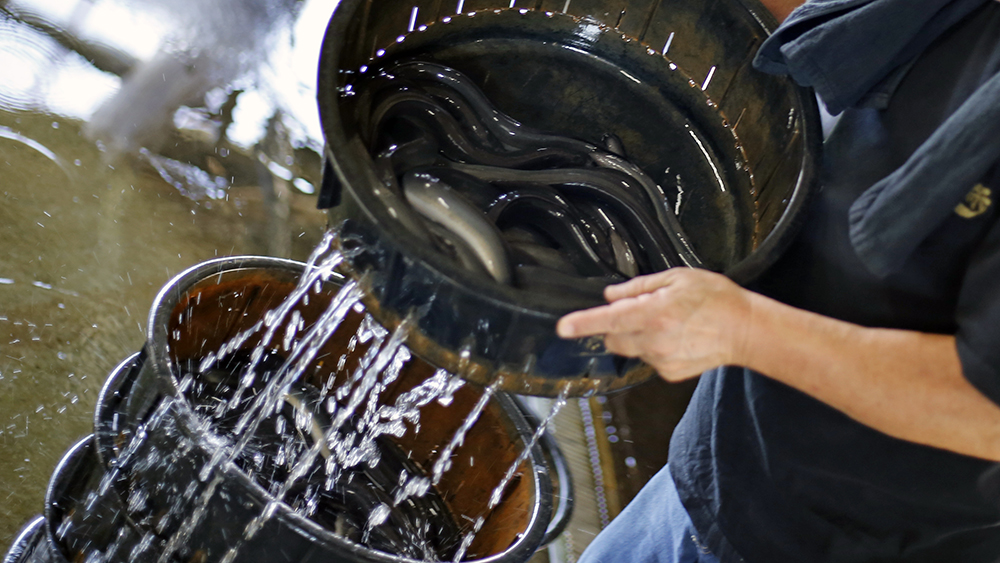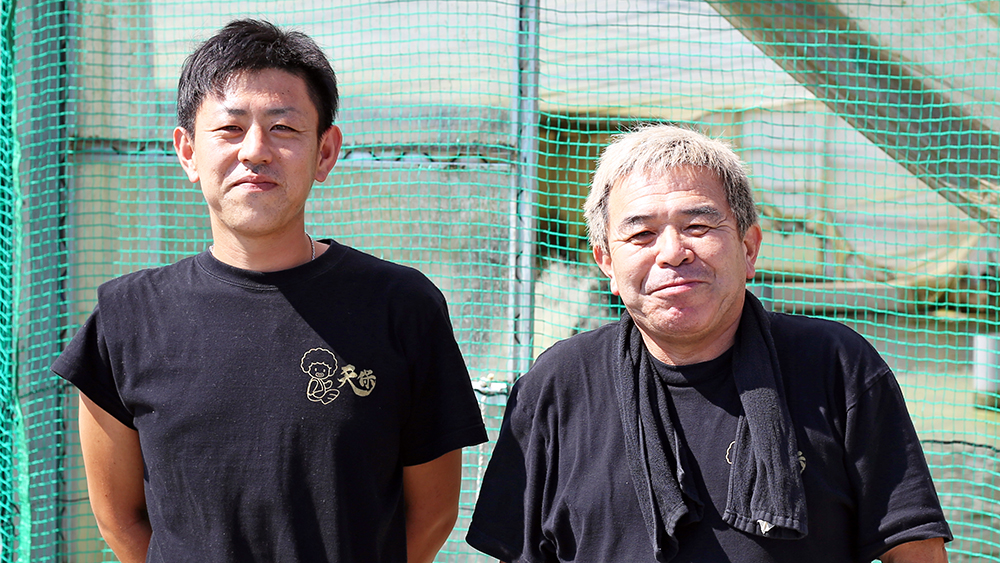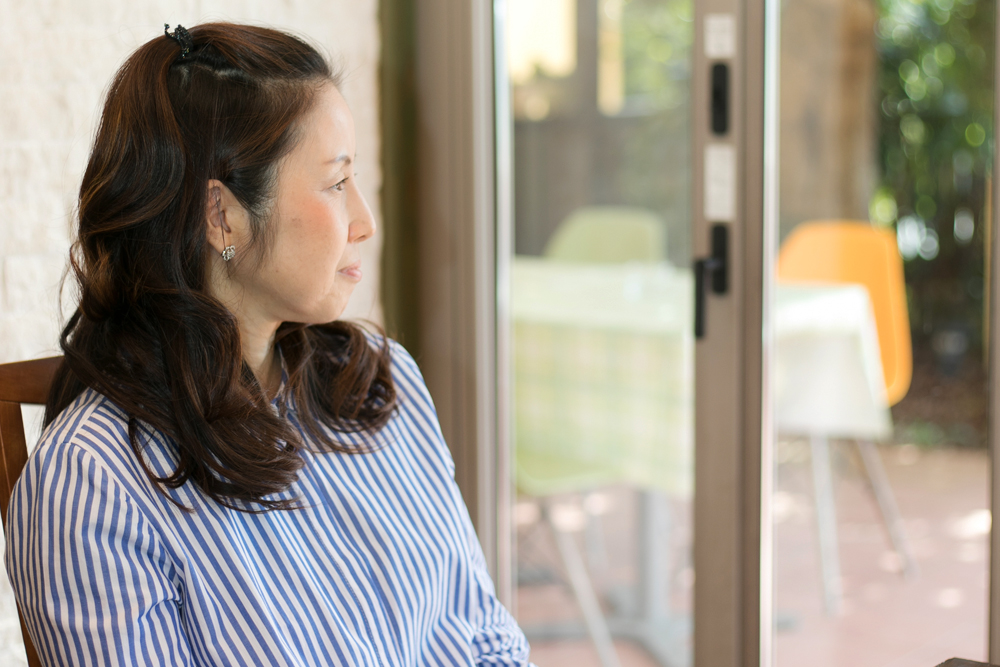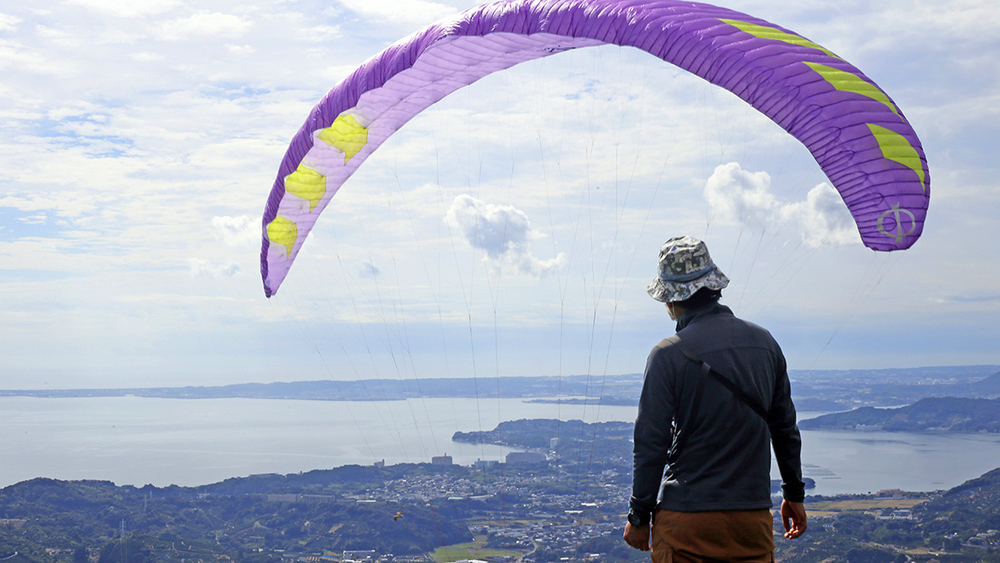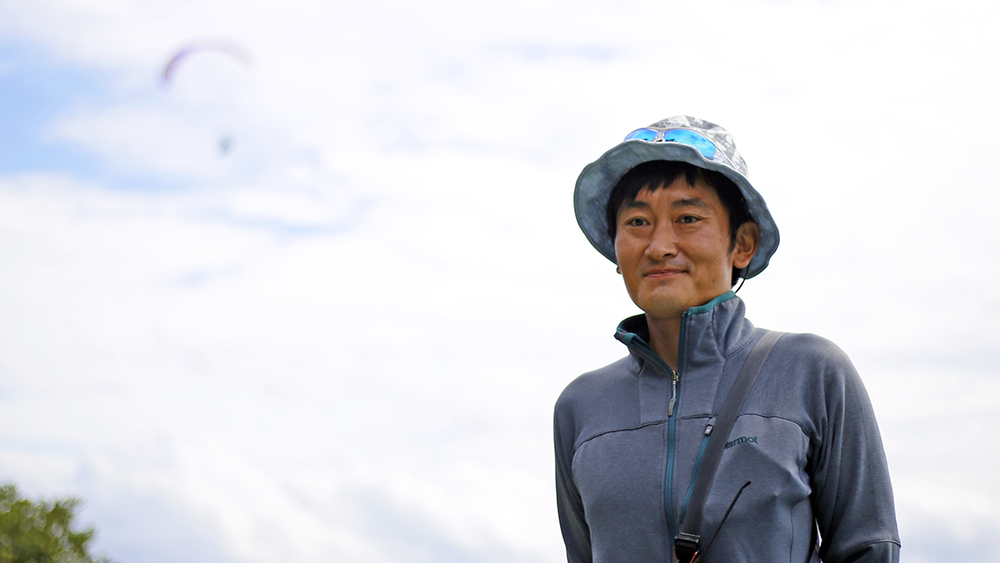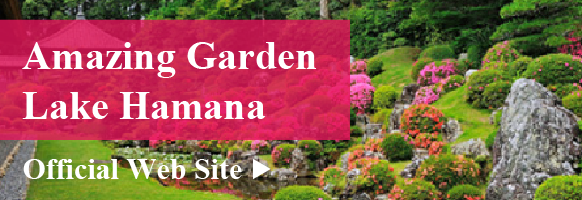Get to Know Hamamatsu
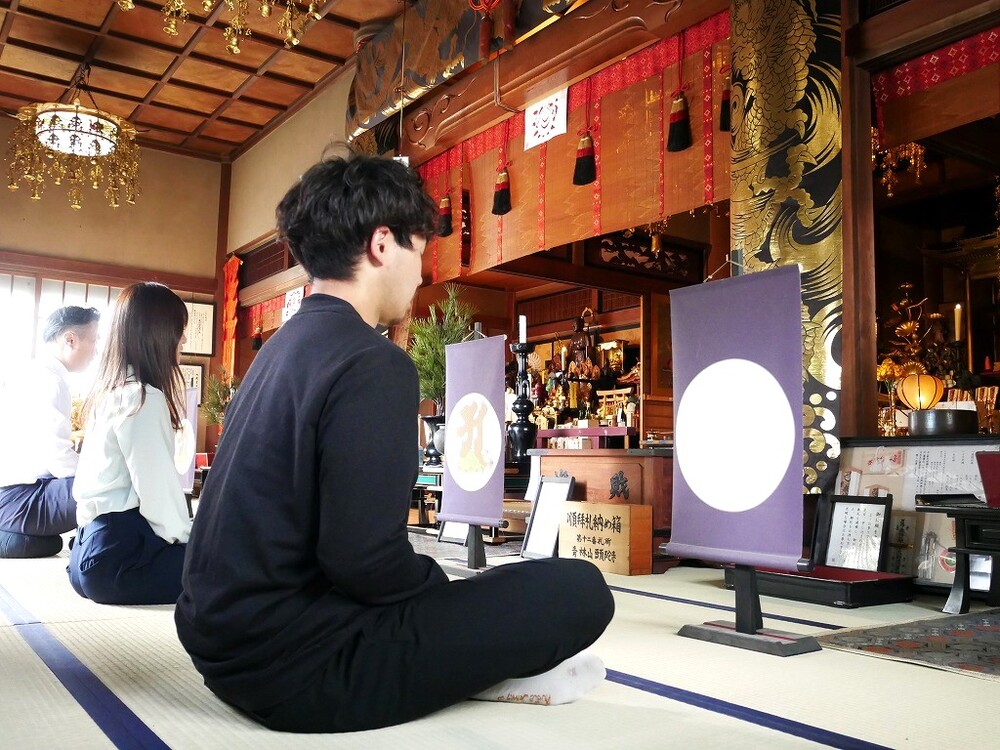
- Enjoy
It’s true that you can connect with the universe! ? Refresh your mind and body with the Ajikan experience at Zudaji Temple!
Do you know about Ajikan, which may connect you to the universe? Ajikan is a meditation method based on yoga, unique to the Shingon sect.
For those who are wondering, “I wonder what it feels like to meditate to connect with the universe. I would like to experience Ajikan at least once,” we recommend the Ajikan class, which is held as one of the Buddhist experience classes at Zudaji, an ancient temple in Hamamatsu. is.
You can experience it with peace of mind as it will be done under the guidance of a proper instructor.
This time, I will introduce the steps for the Ajikan class (experience) at Zudaji Temple.
Zudaji Temple is the oldest existing temple in Hamamatsu City.
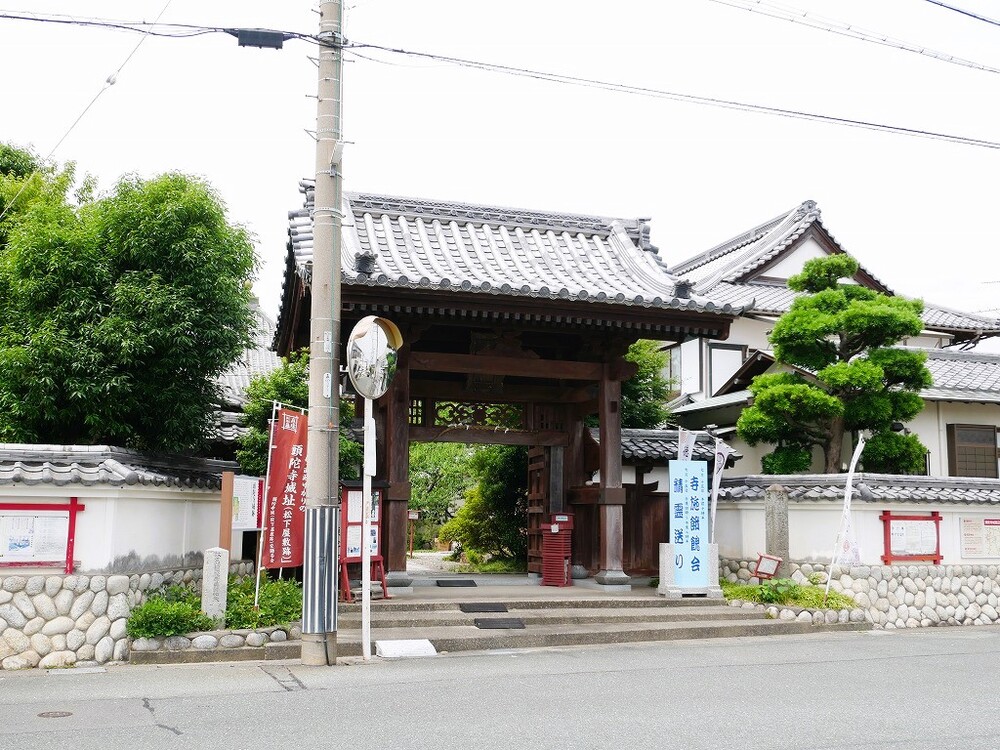
Zudaji Temple, where you can experience Ajikan, is about 2 kilometers east from JR Hamamatsu Station. It is located in a residential area close to National Route 152 and the Hamamatsu City Road/Nakagun Fukutsuka Line.
The temple was founded at the end of the Asuka period. It is the oldest existing temple in Hamamatsu City.
The stone pillar on the right in front of the Sanmon Gate is Hamamatsu City’s oldest guidepost, erected in the middle of the Edo period. If you are curious about how it is written, please walk around and look at the carved letters.
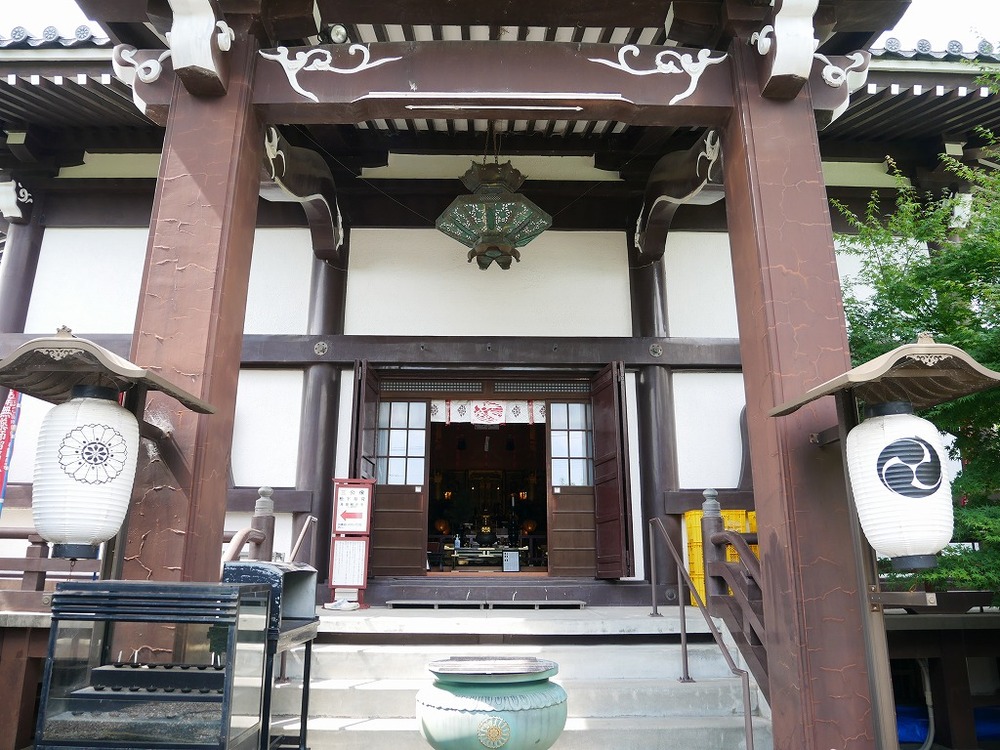
▲Zudaji Temple main hall (Ajikan experience place)
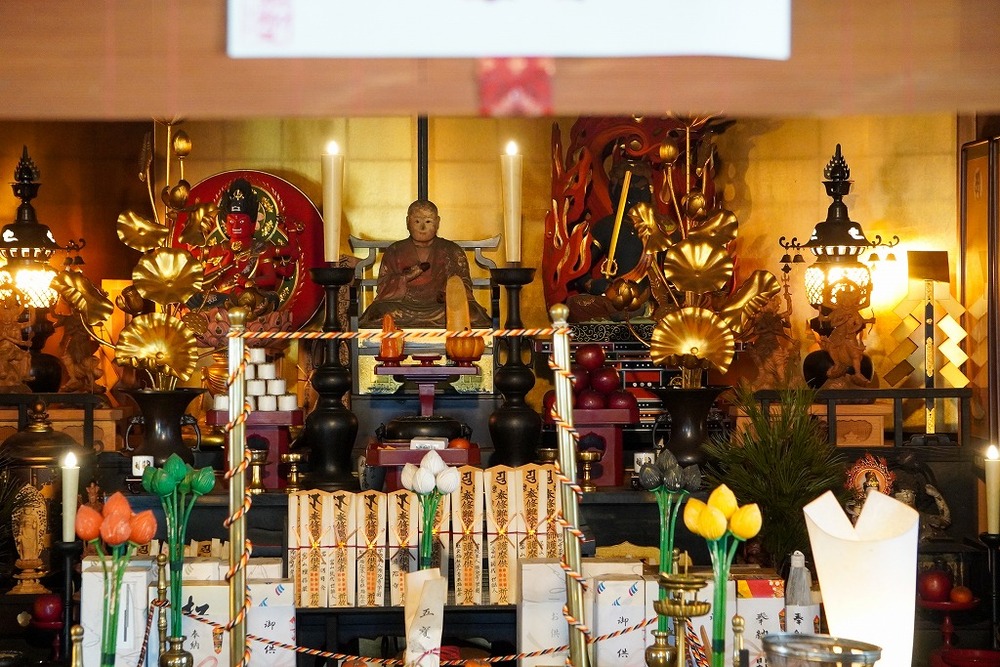
▲Nanyoke Taishi temporarily enshrined in the main hall
The main hall is at the end of the stone pavement that extends straight from the Sanmon gate.
The Nanyoke Taishi, which was undamaged despite being involved in numerous disasters and the ravages of war during World War II, is temporarily enshrined here.
Why not visit before or after your Ajikan experience?
There are also statues of Sengoku warlords associated with Zudaji Temple within the grounds.
By the way, what is Ajikan?
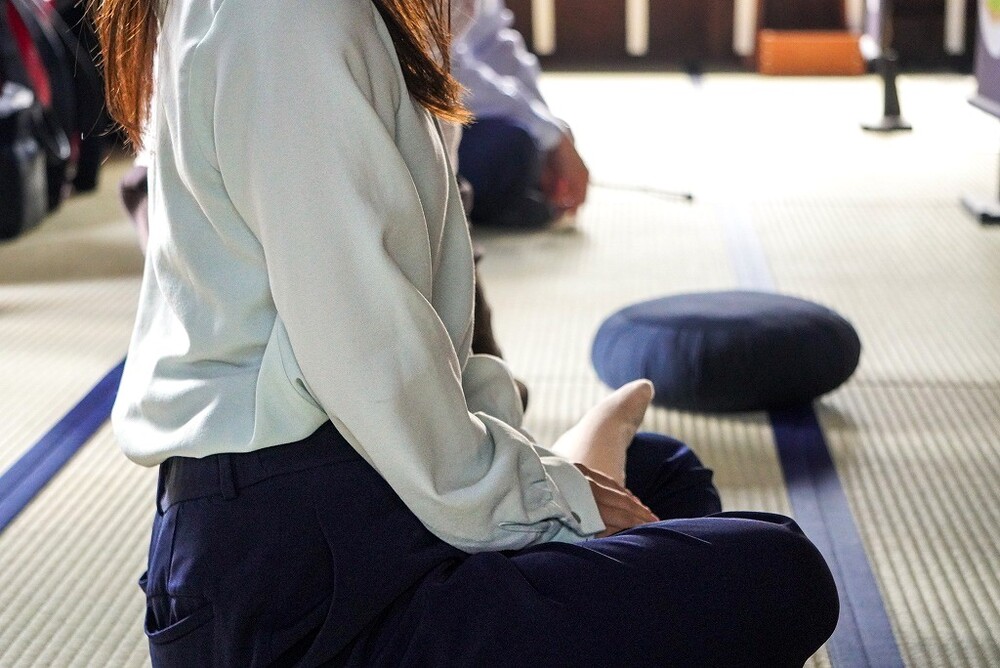
Some of you may be wondering, “By the way, what does Ajikan do?”
Ajikan is a meditation method that has been passed down in Mt. Koya, the sacred place of Shingon Esoteric Buddhism, and is unique to Shingon Esoteric Buddhism. Since it is based on yoga, it is a meditation method that emphasizes breathing techniques.
The official website of Zudaji Temple introduces Ajikan as follows.
“Ajikan is a meditation method passed down in the Shingon sect, and is also called Shingon Zen. This meditation method calms the mind and contacts the Buddha nature within oneself through deep introspection.” (Zudaji Temple) (Quoted from the official website)
・Zudaji Temple official website (external link)
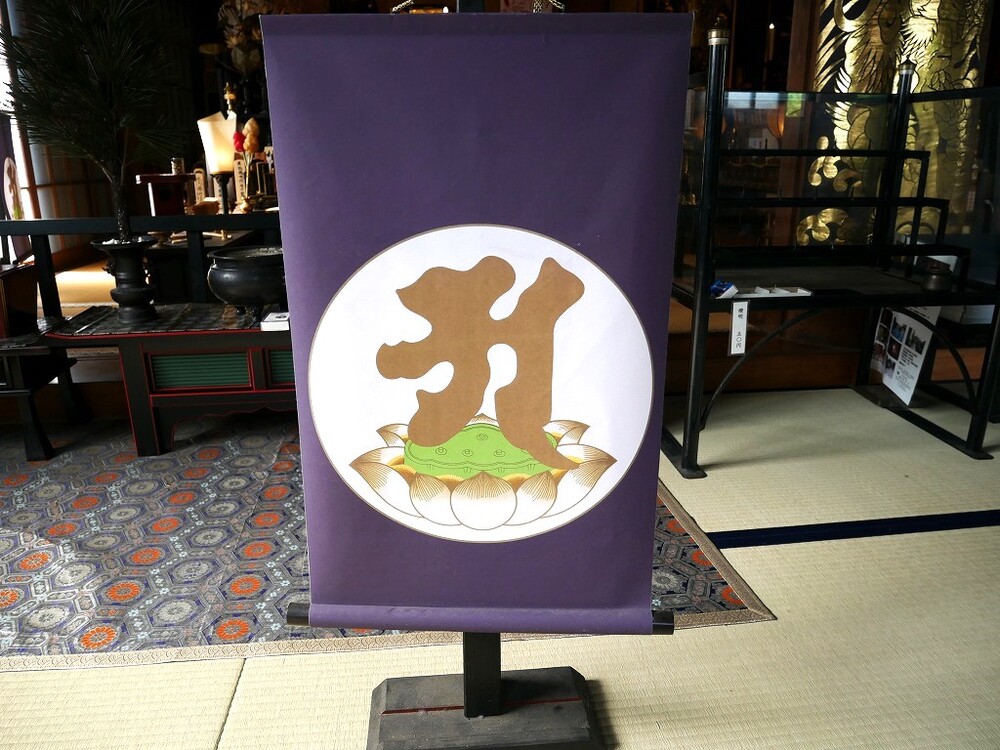
▲The Sanskrit character “A” is written in the center of the hanging scroll.
Buddha nature refers to the potential and nature of Buddhahood that all living things are born with.
The reason Ajikan is said to be a meditation that connects with the universe may be related to contact with Buddha nature.
Meditation is performed in front of a hanging scroll with the character “A” written on it, which is the basis of the Sanskrit character Bonji (a sacred character representing God and Buddhism).
Let's experience Ajikan (Part 1) - Steps and adjusting your breathing
The Ajikan class (experience) is conducted in this way.
1) Listen to a simple explanation, procedures, and precautions about Ajikan from the instructor (Mr. Suzuki, the chief priest at Zudaji Temple).
2) Sit up straight and put your hands together (gassho)
3) Adjust your breathing
4) After adjusting your breathing, speak
5) Go back
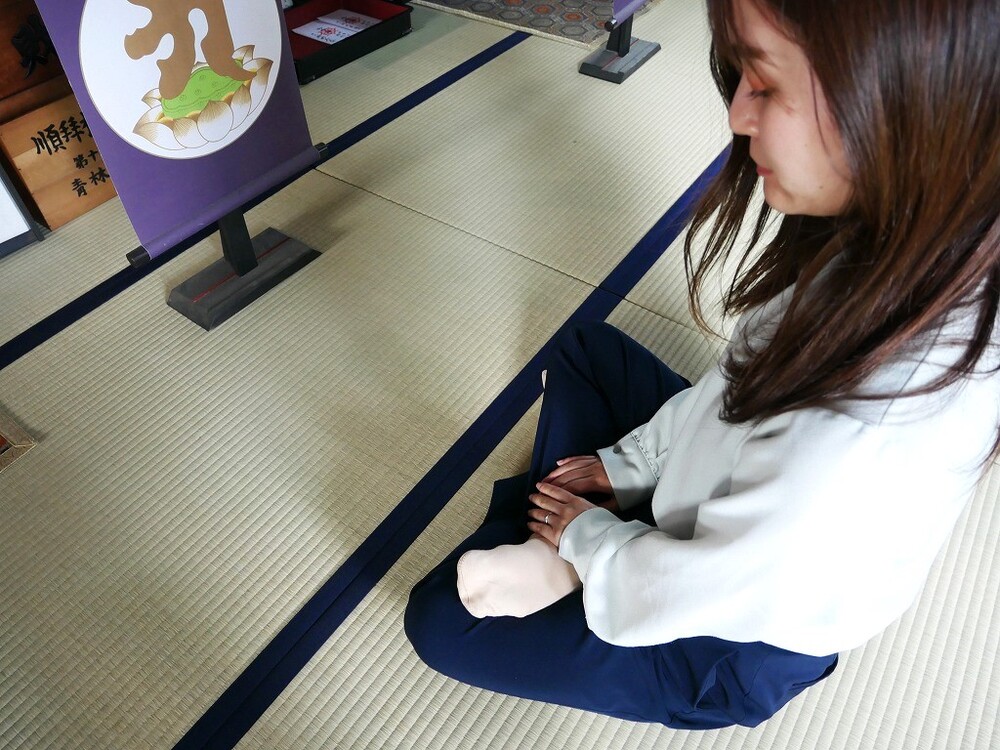
▲Half-prostrate posture
The Ajikan experience starts from a seiza position, but the basic posture is half-prostrate sitting with one foot on top of the other. However, if your feet hurt or you find it difficult to put them together, you can break them down.
Some people seem to bring a cushion for seiza that is placed between their legs and buttocks when they sit seiza.
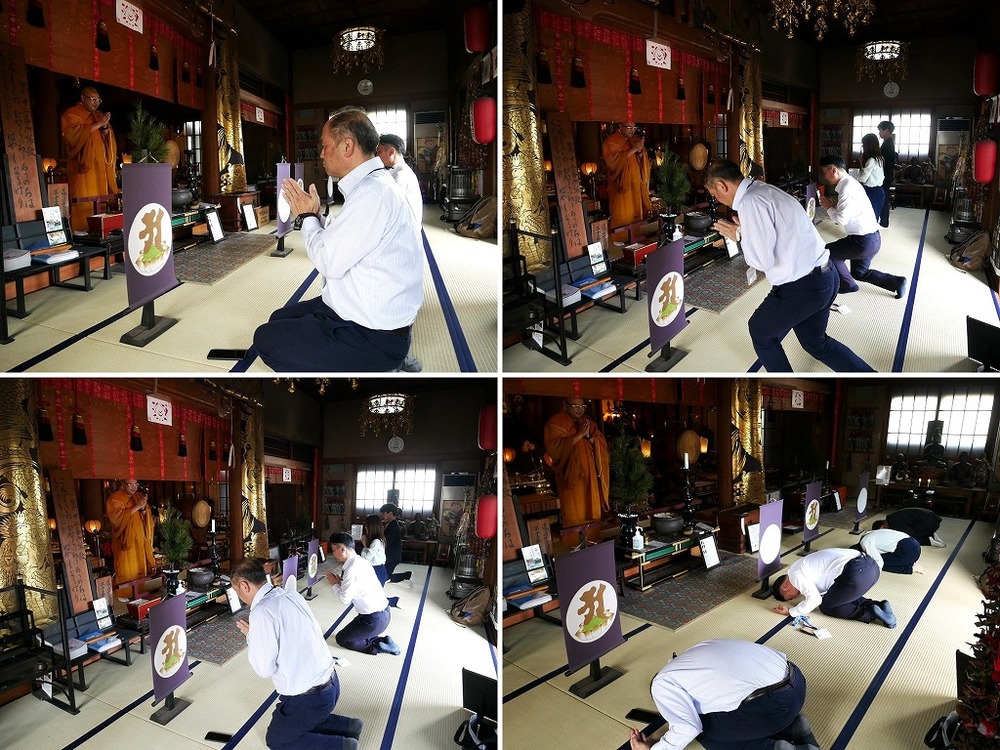
▲Top left: 1. Sitting straight and putting your palms together, upper right: 2. Stand up with your palms together, bottom left: 3. Sitting with your palms together (seiza), lower right: 4. After sitting seiza
The image above is a part of “2) Sitting straight and then joining hands (gassho)”.
First, sit up straight, put your palms together, and then touch the index finger and thumb of each hand. Keeping your fingers together, spread your left and right arms about shoulder-width apart, lean forward, and place your head on the tatami mat.
Next, you stand up, but you don’t just stand up. There are rules about how to go, so please follow the instructions from the chief priest, Mr. Suzuki.
When you stand up, walk your legs in the opposite direction to when you sit down. In the lower right of the image, after sitting down, I lean forward and put my head on the tatami mat.

The distance between you and the hanging scroll, which you are facing in a half-prostrate position, is about 90 centimeters.
Interlace your left and right thumbs to determine a proper posture.
If you are unable to sit half-prone at this time, it is okay to sit cross-legged.
Once you have decided on your posture, follow the instructions of the chief priest, Mr. Suzuki, and adjust your breathing.
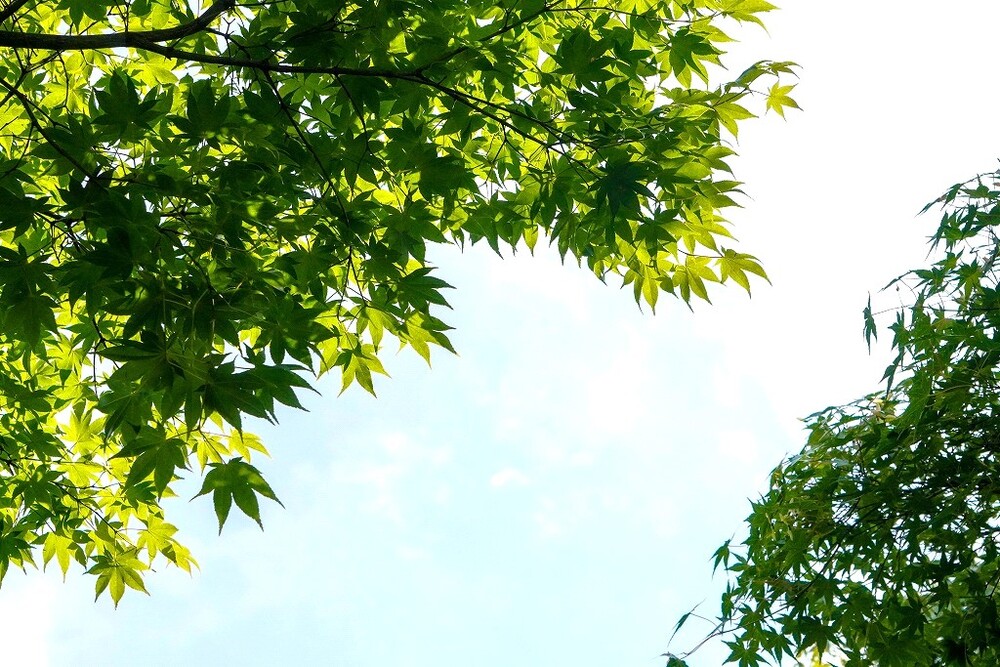
The sounds of birds chirping and the wind blowing through the trees reach my ears. And sometimes the sound of cars running.
The inside of the main hall was an extremely quiet space.
Let's experience Ajikan (Part 2) - To space!
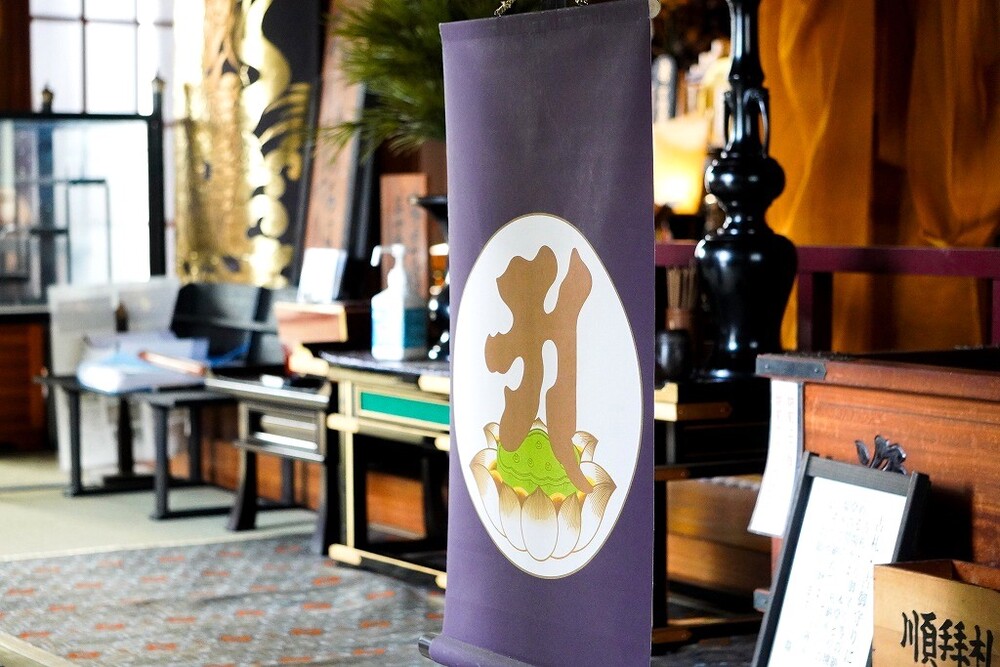
Once you have calmed your breathing, it is time to meditate and connect with the universe. All the participants let out a loud “ahhhhh” sound from their stomachs.
Then, take into yourself the round moon inside the hanging scroll facing you.
The Sanskrit character “A” is written inside the moon. The moon and A will invite participants to space.
If you want to know what’s next, try experiencing Ajikan at Zudaji Temple.
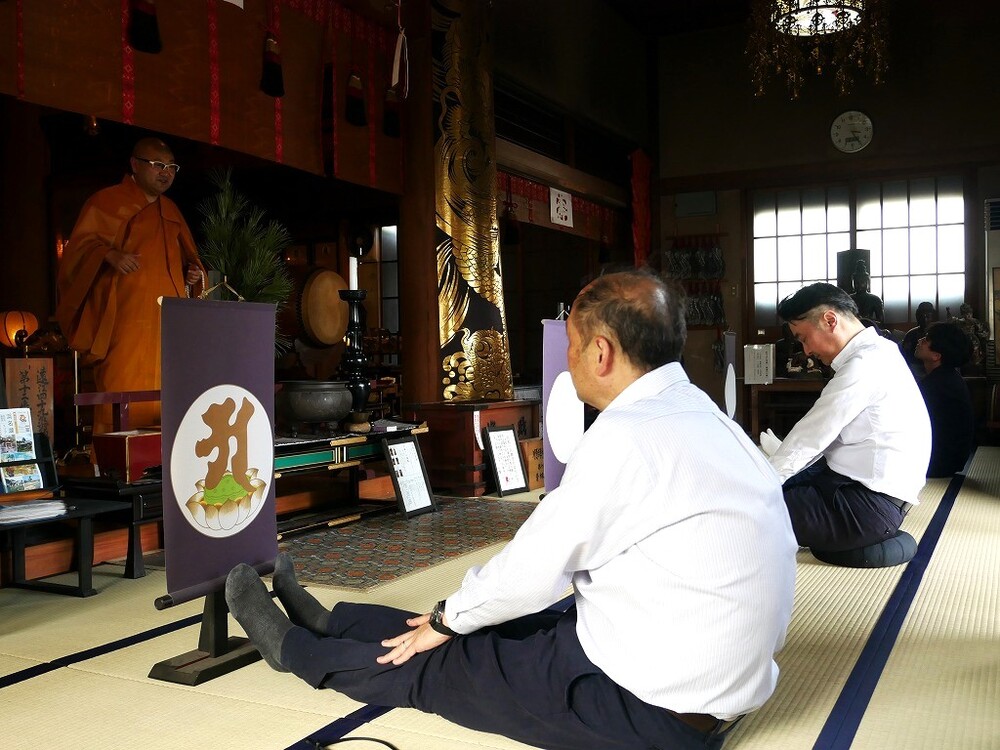
As I mentioned earlier, the posture during the Ajikan experience is not half-prostrate, but it is OK to sit with your legs crossed. In addition, you can also do this with your knees up or your legs stretched out.
When you return from connecting with the universe, relax your legs (body) and use your arms to relax your head as well.
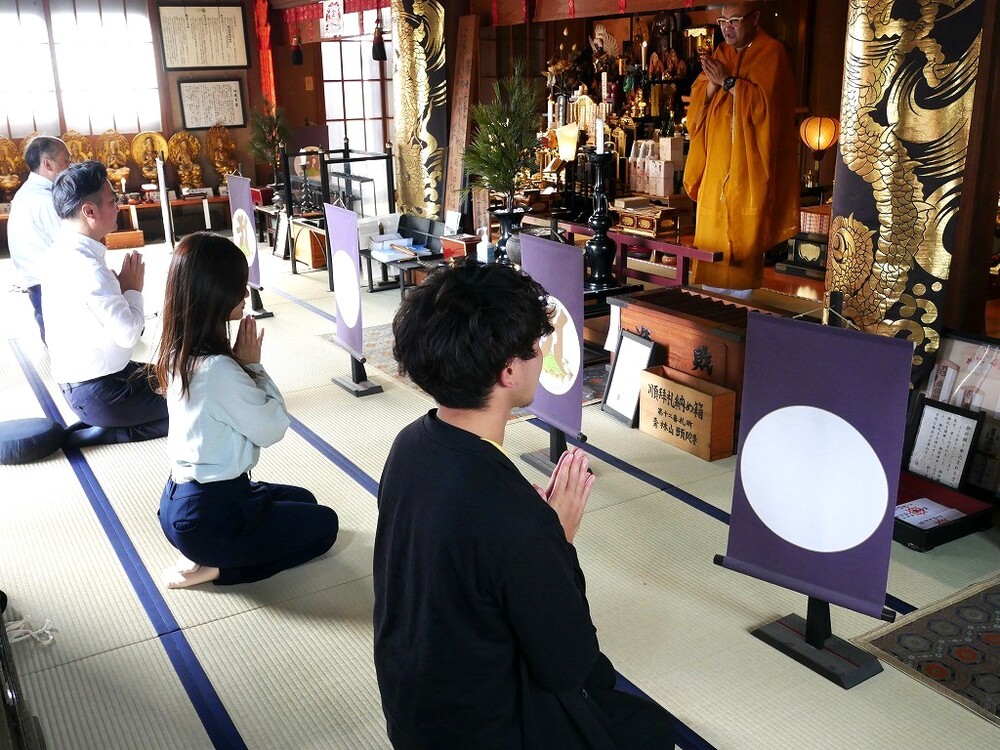
Finally, sit upright, then stand up and sit down again, just as you did before entering meditation.
What are your thoughts? ?

After the session, we asked the participants how they felt, and their responses ranged from, “I felt so good that I fell asleep,” and “My thoughts disappeared and I felt light and relaxed. I can’t experience this in everyday life.”
By experiencing Ajikan, he may have been able to leave this world and come into contact with the Buddha nature within himself.
On the YouTube channel “Jenne Channel”, members of Sea Lake HAMANA Jenne are introducing the Ajikan experience ▼
[Shizuoka Prefecture/Hamamatsu Tourism] What is “Ajikan”? First meditation experience at Zudaji Temple!
「https://www.youtube.com/watch?v=QRxXPCosOA8&list=PLfZe1rC9CURvBsBt39i1OqLuDwxdTPlUW&index=11」
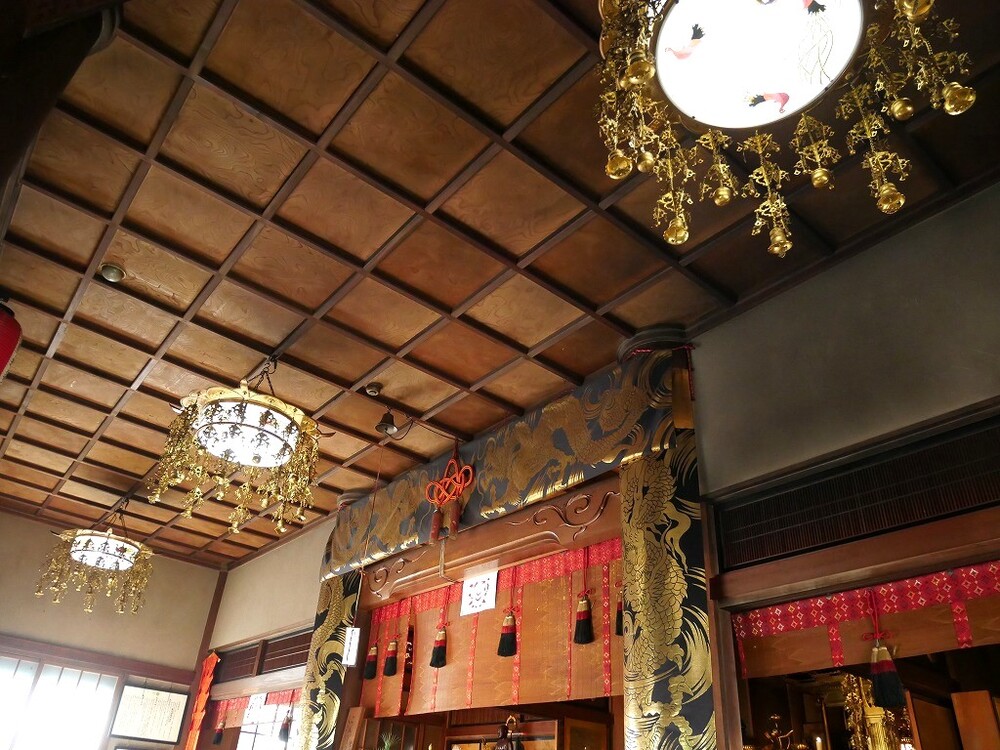
The Ajikan experience heals both body and mind, and if you feel good in the end, it’s OK! It’s not a competition with others, and you can do it at your own pace.
Would you like to leave this world for a while and have an experience of connecting with the universe at Zudaji Temple?
※Note※
Never practice Ajikan alone. We request that you follow the guidance of a Shingon sect monk who has received initiation.
<Zudaji Temple/Ajikan Experience (Classroom)>
Experience date and time : 2nd and 4th Saturday of the month 7:00 a.m. to 8:00 a.m.
Fee : 500 yen (1,500 yen after hours or by reservation)
*Includes sermon and tea / *Applications are accepted from 2 people / *You cannot enter or leave the venue midway through.
Experience location: Main hall
Zudaji Temple official website (external link)
You can also apply for the Aji-viewing experience at Toda-ji Temple through Hamamatsu/Hamanako Daisuki Net.
Please take this opportunity to have an experience that may connect you with the universe.
Experience the sermon and Ajikan experience at Zudaji Temple, a famous temple associated with Hideyoshi! (external link)
